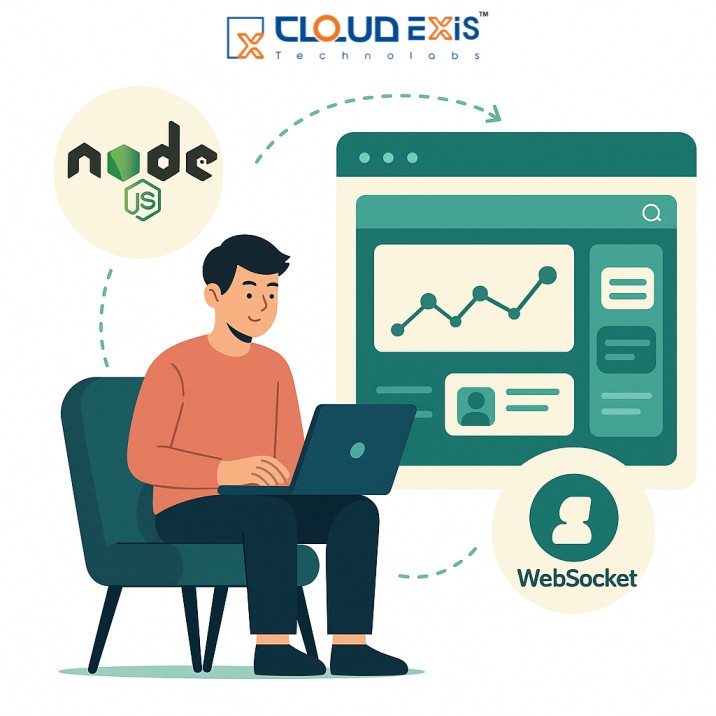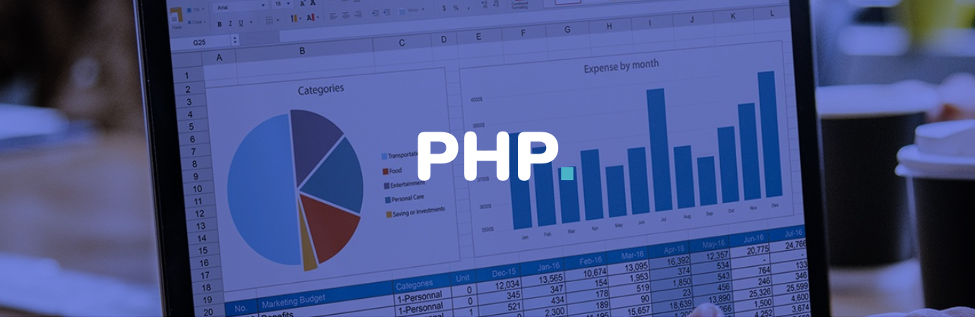Introduction
In today’s fast-evolving digital landscape, multi-tenant SaaS (Software as a Service) applications have become the backbone of scalable, cost-effective, and efficient digital platforms. Multi-tenancy allows one application instance to serve multiple customers (tenants), each with isolated data and configurations, optimizing both cost and performance.
As we enter 2025, combining Laravel for backend strength and React for frontend agility stands out as a winning formula. Laravel brings elegance and robust architecture to SaaS backends, while React delivers dynamic, user-friendly interfaces that customers expect in modern SaaS products.
This guide walks through the essential steps and best practices for building a multi-tenant SaaS application using Laravel and React, covering everything from architecture and tenancy models to UI design, deployment, and scalability.
Why Choose Multi-Tenancy And Why Laravel + React?
What is Multi-Tenancy?
Multi-tenancy means a single application instance serves multiple organizations or clients. Each tenant’s data and configuration are isolated, but they share the same codebase and infrastructure.
Key benefits include:
Reduced operational costs — shared infrastructure means less overhead.
Simplified maintenance — one update benefits all tenants.
Faster onboarding — instant tenant setup and management.
Efficient scaling — easily handle growth without duplicating resources.
Why Laravel for SaaS Development?
Laravel has become the preferred framework for SaaS backend development due to its simplicity, rich ecosystem, and modular architecture.
Key strengths of Laravel SaaS development include:
Elegant syntax and developer-friendly design.
Strong ORM (Eloquent), middleware, and job queue system.
Built-in authentication and API handling.
Excellent support for multi-tenant structures through community packages.
Readiness for billing, role management, and subscription systems.
Why React for SaaS Frontends?
React SaaS solutions offer unmatched flexibility and performance for complex, data-driven applications.
Advantages include:
Reusable component-based architecture.
High performance and scalability.
Rich ecosystem (Redux, Zustand, React Query).
Perfect for dashboards, analytics, and client portals.
Seamless integration with Laravel APIs.
Why the Combination Works
Together, Laravel and React create a powerful full-stack SaaS framework. Laravel handles the heavy lifting on the server, while React ensures interactive, lightning-fast experiences on the client side.
Architecting Multi-Tenant SaaS with Laravel
Designing a robust SaaS backend requires clarity on how to manage tenants, data isolation, authentication, and resource sharing.
1. Choosing the Right Tenant Architecture
a. Single Database, Shared Schema
All tenants share the same database and tables. Each row includes a tenant_id column to isolate data.
Pros: Simpler, cost-efficient.
Cons: Lower data isolation, harder for large tenants.
b. Single Database, Separate Schemas
One database hosts separate schemas for each tenant.
Pros: Better data separation.
Cons: Slightly more complex migrations and management.
c. Multiple Databases (One per Tenant)
Each tenant has a dedicated database.
Pros: Maximum isolation, better compliance and scalability.
Cons: Higher management overhead and resource usage.
Choosing the right model depends on your scalability, compliance, and cost priorities.
2. Laravel Tools for Multi-Tenancy
Laravel’s ecosystem provides excellent tools to simplify tenant management, such as:
Tenancy for Laravel (
stancl/tenancy) — automates tenant context switching.Spatie Laravel Multitenancy — flexible, lightweight tenant separation.
Custom multi-tenant middleware — for simple shared-schema projects.
These solutions manage everything from tenant routing and migrations to storage and cache isolation.
3. Tenant Onboarding Flow
A solid onboarding workflow is vital for automation and scalability.
Typical flow:
Registration — a customer signs up and creates a new tenant record.
Provisioning — Laravel automatically sets up the tenant’s database, schema, or records.
Plan Assignment — assign pricing plans or roles.
Access — the tenant admin gets dashboard access.
Lifecycle Management — include updates, billing, and eventual offboarding.
4. Data Modeling and Isolation Practices
Use a central
tenantstable with columns liketenant_id,name,domain, andplan.Implement global scopes to filter every model query by
tenant_id.Use middleware to set the tenant context for every request.
Isolate cache, sessions, queues, and logs per tenant.
Regularly back up tenant data independently.
5. Authentication and Security
Security is critical in multi-tenant Laravel SaaS development:
Always validate user-tenant relationships to prevent cross-access.
Use API tokens with tenant context.
Implement encryption for sensitive data.
Regularly patch dependencies and monitor logs for tenant activity.
Use role-based access control (RBAC) with packages like Spatie Permissions.
6. Billing, Subscriptions, and Role Management
Integrate payment gateways (Stripe, Paddle, Razorpay) with subscription logic in Laravel.
Offer different plans and seat-based pricing.
Allow self-service upgrades or downgrades.
Manage billing history and invoices per tenant.
Sync usage-based metrics for flexible pricing models.
7. API Design for SaaS
Design tenant-aware APIs to ensure isolation and efficiency:
Prefix routes with
/api/{tenant_id}or use subdomains liketenant1.app.com.Implement middleware for context switching.
Use Laravel Sanctum or Passport for authentication.
Include rate limiting and version control for long-term maintainability.
8. Performance and Scaling
Performance should scale with your tenant base:
Optimize queries and index tenant-related fields.
Use Redis for cache and queue management.
Enable database read/write splitting for large tenants.
Use job queues for heavy background tasks (emails, analytics, reports).
Implement lazy loading and pagination for large data sets.
Building a React Frontend for Your SaaS
While Laravel powers the backend, React ensures seamless interactivity and scalability on the frontend.
1. Setting Up the React Project
Use tools like Vite, Next.js, or CRA (Create React App) to bootstrap your frontend.
Include:
TypeScript for type safety.
Component libraries (Material-UI, Ant Design, or Chakra).
React Router for navigation.
Redux or Zustand for global state.
React Query for API caching and synchronization.
2. Tenant Context and UI
Your UI should reflect tenant context dynamically:
Store tenant info (name, domain, plan, permissions) in a global context.
Apply tenant-specific themes and branding (logos, color palettes).
Render feature sets conditionally based on plan or role.
3. Core UI Modules in React SaaS Solutions
Landing & Onboarding — guided setup wizard for new tenants.
Dashboard — summary metrics, usage charts, and quick actions.
User Management — role assignment, invites, and access control.
Billing — subscription upgrades, invoices, payment methods.
Settings — profile updates, tenant preferences, and feature toggles.
Each module should communicate with Laravel APIs securely and efficiently.
4. React Best Practices for SaaS Applications
Modularize components for maintainability.
Use code-splitting and lazy loading for better performance.
Optimize re-renders with
React.memoand context selectors.Add error boundaries and fallback UI for better resilience.
Ensure accessibility (WCAG compliance).
Maintain responsive layouts for all device sizes.
Implement client-side caching with React Query.
Use environment-specific builds for staging and production.
5. Integration with Laravel Backend
Laravel APIs act as the communication bridge:
Use token-based authentication for secure API calls.
Include tenant context (domain or ID) in headers or tokens.
Protect routes with middleware validation.
Handle CORS correctly for cross-origin requests.
Synchronize user sessions between Laravel and React via JWT or cookies.
6. Frontend Deployment
React apps can be deployed independently or within Laravel:
Use CDNs or static hosts like Vercel, Netlify, or AWS S3.
For SEO-focused content, use Next.js for server-side rendering.
Configure CI/CD pipelines for automated testing and deployment.
End-to-End SaaS Workflow
A simplified lifecycle for a multi-tenant SaaS built with Laravel and React looks like this:
Tenant Sign-Up — React UI collects tenant info → Laravel backend creates tenant record.
Provisioning — Laravel sets up tenant schema or database, seeds default data.
Verification — Email/SMS verification and access granted.
Login — User signs in → React fetches tenant data from Laravel API.
Dashboard Load — Tenant-specific content and analytics shown in React.
Admin Actions — Add users, manage billing, track usage.
Billing Events — Laravel manages subscription renewals, upgrades, invoices.
Scaling — As tenant load increases, Laravel and database auto-scale.
Best Practices for Multi-Tenant Laravel SaaS Development
1. Plan Early
Define your tenancy model (shared or separate DB) at the start—migrating later can be painful.
2. Automate Onboarding
Use scripts or jobs to automate tenant creation and setup.
3. Isolate Context
Ensure every API, query, and job runs within the correct tenant context.
4. Secure Everything
Enforce tenant validation, encrypt sensitive fields, and monitor audit logs.
5. Monitor Performance
Use analytics to identify “noisy neighbors” — heavy tenants consuming excessive resources.
6. Build Feature Flags
Enable or disable features based on plans or roles without redeploying code.
7. Scale Smartly
Use horizontal scaling for backend services and caching layers.
8. Test for Isolation
Test all modules under multiple tenant scenarios to ensure no cross-data access.
Deployment and Scaling in 2025
Cloud Infrastructure
Deploy Laravel on AWS, GCP, or Azure.
Use Docker containers or Kubernetes for orchestration.
Utilize managed databases with auto-scaling and backups.
Implement load balancers for even traffic distribution.
Frontend Delivery
Use CDNs for React app distribution.
Enable HTTP/2 and Brotli compression for faster performance.
Set up CI/CD pipelines with rollback support.
Global Tenancy
For businesses with global reach:
Deploy regionally (EU, US, Asia) for compliance and latency.
Route tenants to their nearest data center.
Ensure GDPR, HIPAA, or local data-protection compliance.
Key Takeaways
Laravel SaaS development empowers the backend with robust structure, API management, and multi-tenant support.
React SaaS solutions deliver dynamic, interactive, and scalable user experiences.
Combining both technologies ensures cost efficiency, fast development, and easy scaling.
Prioritize automation, security, and modular architecture for long-term success.
Continuously monitor, iterate, and evolve as your tenant base grows.
Conclusion
In 2025, building a multi-tenant SaaS platform with Laravel and React isn’t just a technical choice. it’s a strategic one. Laravel provides the backbone for tenant management, billing, and API logic, while React ensures seamless, responsive interfaces. Together, they empower teams to deliver scalable, user-centric SaaS platforms faster and more efficiently than ever.
If you’re planning your next SaaS venture, start with a well-defined multi-tenant architecture, a modular Laravel backend, and a powerful React frontend. With the right foundation, your SaaS product can scale globally, securely, efficiently, and profitably. Contact Us






